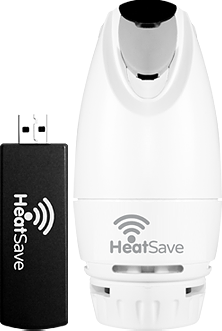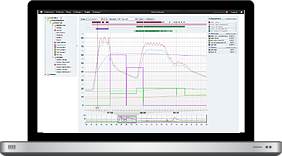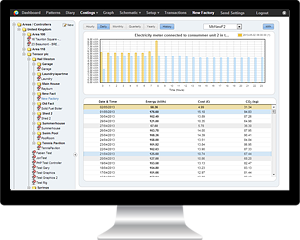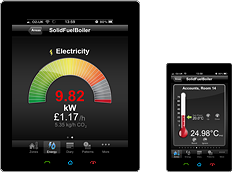The Smart Heritage Building Performance Measurement for Sustainability (HBIM) project is an institutional-link collaboration studying methods for smart energy and environmental performance measurement in heritage buildings, for sustainability and heritage preservation purposes. The University of the West of England, the University of Salford, the British University in Egypt and Cairo University are the main partners in this research initiative.
In this project several building performance monitoring systems have been installed into selected heritage occupied buildings, used as case studies, with the data being analysed for sustainability impact and building health effects. The final results will be benchmarked against current heritage conservation and sustainable performance measurement best practices.
The final deliverable of the project is an open-source web portal for expert data management, visualization, and analysis, combining all aspects of the case studies and their contextual information. This includes digital sensor data, models, measurement results, and calculation algorithms.
The Centre for Architecture and the Built Environment at UWE Bristol is the project leader, being responsible for the portal development and also working on new ways of analysing, visualizing, and presenting data.
They are also in charge of the Hassell Drive case study, which examines the effect of externally insulating late 20th century “No fines” solid walled homes in Bristol. A sample of these properties are to be monitored in terms of energy consumption and comfort levels before, and after insulation works have been carried out over the space of a single winter and summer, which is particularly advantageous for the HBIM project.
“In order to evaluate building performance as part of the HBIM project, we required a system capable of monitoring multiple environmental parameters, such as temperature, energy expenditure, occupants’ comfort and energy efficiency before/after putting in the measures” commented Mr Ammar Alzaatreh, Research Associate at the Faculty of Environment and Technology (FET) within UWE Bristol.
The HeatingSave Energy & Environmental Monitoring System was the solution of choice for monitoring the test buildings’ performance, especially since it came highly recommended by another partner in the project, the University of Salford.
“The HeatingSave Energy Monitor was recommended by our colleagues at the University of Salford, where it is also currently being used for research purposes. Based on their feedback, we’ve decided to use it as well”, Ammar told the HeatingSave reporter.
The HeatingSave Energy Monitor wireless management system collects information from Zig 2.4 Mhz wireless mesh network sensors located in the living rooms, main bedrooms, kitchens and bathrooms of the 4 test buildings. This data can be analysed for an indication of energy use (Gas and electricity meter) and thermal comfort within monitored zones.
The system collects internal and external temperature data, along with information on how the heating system works and details of energy use. It also monitors air quality including carbon dioxide, relative humidity, volatile organic compound levels and the way a building is used in terms of its occupancy, light and sound levels and the occupants’ activities and lifestyles
Using a password protected standard internet connection, sensors can quickly be set up to review and quantitatively analyse the data with user-friendly software graphics, via a laptop, PC, mobile phone or tablet-based device.
“The installation process was really fast, the Energy Monitor is remarkably easy to set it up, as is adding all the wireless sensors. We required only minimum assistance from the HeatingSave helpdesk throughout” Ammar told the HeatingSave reporter.
“In fact, this is what I like most about the HeatingSave system – just how user-friendly and fast it is to set up and use” he added.
According to the UWE Bristol researcher, HeatingSave is not only dead easy to deploy in the field, but also very intuitive, requiring only minimal training to operate. “For training, we’ve relied mostly on the system’s User Manual, support from our colleagues from Salford University, who had used the system before, and the HeatingSave Help Desk. However, since the system is so intuitive, we have learned how to use it in a very short span of time” Ammar revealed.
Researchers and scientists at the University of West of England are actively using the Heating Save Monitoring System and are very happy with the results it’s provided thus far. Says Ammar: “The system is currently working as intended, supplying the energy and environmental data. The software dashboard is really easy to use in order to access and process the environmental data and graphs. The remote management system is also very effective and convenient.”
Data collected by the HeatingSave Monitoring System is presented using a Dashboard system that provides consolidated and drill down views of the energy use data and provides a clear understanding of the real impact of energy efficiency measures through pre-installation analysis and post-installation monitoring.
Ammar added that he is very happy with the quality of the after-sale service from HeatingSave: “The HeatingSave help-desk support service is phenomenal, the best support service I have received from any company, ever. They were very prompt and quick to answer any questions and queries and sort out any problems.”
Would the Centre for Architecture and the Built Environment at UWE Bristol recommend HeatingSave to other researchers in the energy efficiency segment? “Yes we would” was the reply.
Summing up his experience of HeatingSave, Mr. Ammar Alzaatreh said: “HeatingSave is an easy to use, efficient, high-performance energy and environmental monitoring system perfect for data recording and analysis.”
……………………………………………………………………………………………………………………
Centre for Architecture and the Built Environment
University of the West of England,
Bristol,
Web: http://www.hbim.org/
Phone: +441179656261
Email: ammar.alzaatreh@uwe.ac.uk






